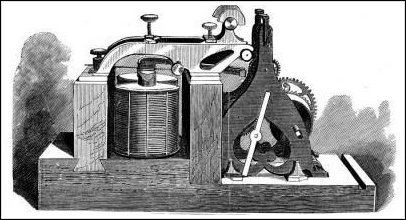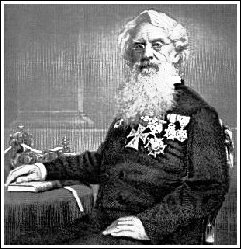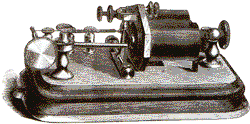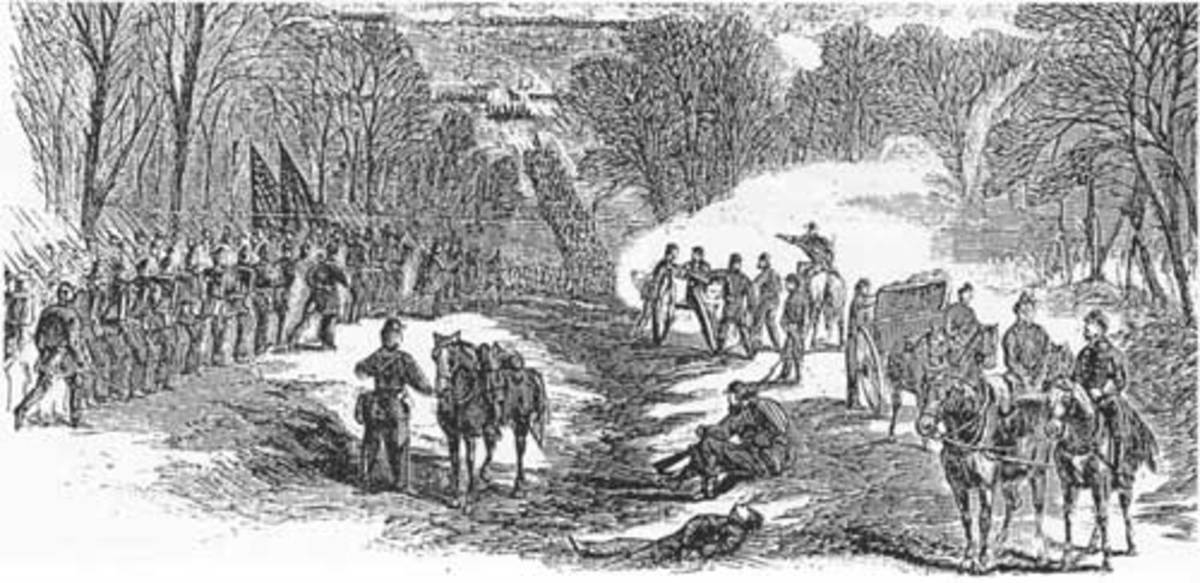"What Hath God Wrought!"
Morse Telegraph Receiver of 1844


Samuel Morse

When Samuel Finley Breese Morse’s immortal words "What hath God wrought!” sped across a telegraph wire from Washington, D.C., to Baltimore, Maryland in 1844 world history was changed forever.
But on January 27, 2006, over 160 years later, Western Union sent its final telegram. There was nothing but a small announcement on Western Unions' website to commemorate the passing of the telegraphs' long and colorful history.
Developed in the 1830’s and 1840’s, the question of who actually invented the telegraph has been debated. However, history generally gives credit to Morse (1791-1872). The word “telegraph” originated in Greece; with "Tele" meaning distant and "graphein" meaning to write.
The idea for the electric telegraph was born on the deck of a sailing ship called the Scully, in the middle of the Atlantic Ocean in 1832. At the time, Morse was one of the most famous artists in the United States. While onboard the ship passenger conversation centered on a new invention called the electromagnet. They were intrigued with how electricity traveled through a wire, which gave Morse a germ of an idea. That idea grew into the telegraph.
Others had toyed with similar thoughts but, it wasn’t until Morse, the process was ultimately perfected. Up until then the telegraph had been a cumbersome piece of equipment, requiring 26 separate wires, one for each letter of the alphabet.


In the beginning, simple electrical signals were transmitted by a wire laid between stations. But progress and technology eventually laid the groundwork for a communications revolution. By 1866 a telegraph line had been laid across the Atlantic Ocean from the U.S. to Europe. However, by the 21st century, the telegraph began to fade into history replaced by telephones, fax machines, internet, and other innovations.
In 1835, Morse proved signals could be transmitted by wire and produce written codes on a strip of paper. Although the public was amused with the invention, it was considered little more than a curiosity. Morse later modified the device to write dots and dashes. However, people remained skeptical.
In 1837, Morse applied for government assistance to develop the telegraph. But at the time the nation was in the midst of an economic disaster known as the Panic of 1837. Later, when the nation was more fiscally sound, Morse reapplied. This time he was granted $30,000.
But, the telegraph changed the world when its first message, "What hath God wrought!” was sent by Morse. The country was convinced. Morse Partnered with several other entrepreneurs and began building more telegraph lines.
Morse had no idea telegraph operators could learn to read and make copy with his dot-and-dash signals. It was only after tape machines had been in use for a time it was discovered operators were writing messages by sound rather than reading marks off the tape. Soon a device called a sounder became the receiving device of choice, replacing moving tape.
To an untrained ear the telegraph sounder makes only a series of clicks and clacks, however, a skilled operator can easily distinguish between the "down-click" and the "up-clack” and make copy at 40 WPM or better.
By 1856, thirty or forty rival companies, working on different patents of the telegraph covered the most populated areas of the eastern part of the nation. About this time, a company established in 1851 called The New York and Mississippi Valley Printing Telegraph Company, had been buying up several of their rival companies. In 1856 it became known as the Western Union Telegraph Company. Five years later, in 1861, Western Union completed the first transcontinental telegraph line and the fledgling Pony Express operation went out of business. During the Civil War the transcontinental communication system played a vital role.
Telegraph companies had already covered most of the Eastern U.S., and a telegraph line had been constructed through the Rocky Mountains connecting the West Coast. The telegraph was used to report military intelligence and soon became their most used form of communication. However, there were drawbacks, as enemies could intercept messages and replace them with misinformation.
As the war progressed telegraph lines were quickly strung and by the end of the war more than 15,000 miles of telegraph lines were in use. Abraham Lincoln used the telegraph to communicate with his commanders. He was able to maneuver his troops from afar, unlike any president before.
In 1874, Thomas Edison invented quadruplex telegraphy, where two messages could be sent in each direction at one time. In 1915, the multiplex telegraphy had expanded to let eight or more messages be sent at one time.
As progress marched on, other technological innovations such as the telephone appeared on the scene. However, long distance communication was expensive. So, during the 1920’s and ‘30’s people elected to send much cheaper telegrams.
Then World War II erupted and the Western Union courier became a symbol of dreaded news, as the War department used them to notify families of deaths and injuries of military personnel.
But as technology continued to evolve, the success of the telegram was not to last. As long distance rates dropping in the late 1960’s and early ‘70’s, Western Union couriers became obsolete. Then came faxes, email, and even cheaper long distance rates. The telegram was doomed.
Without the telegraph history might have taken a much different path. The telegraph paved the way for the modern-day communications systems,










